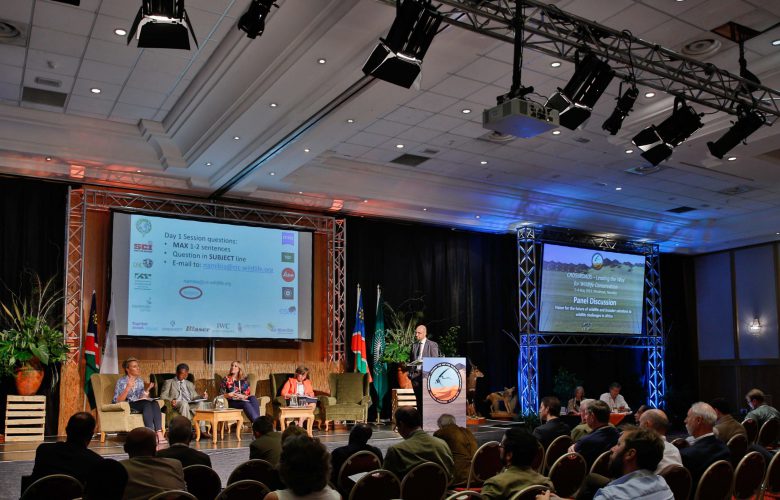For the 6th session, Lizanne Nel (Manager Conservation, South African Hunters and Game Conservation Association, South Africa) opened by suggesting that many wildlife and conservation issues can be reconsidered as opportunities. Convert the value of wildlife resources into positive land use outcomes, contributing to both biodiversity, conservation and socio-economic development. We should also influence land use planning processes to proactively reduce land use conflicts and identify areas with high potential for biodiversity economy enterprises. In addition, alternative, innovative financing /incentive options should be considered, such as:
- Carbon credits/wildlife credits
- National geographic taxes
- Incentives, financial and other
- Green certification/labelling
On top of this, mechanisms for data gathering and collaborations should be developed in order to improve understanding within this community.

Danene van der Westhuyzen, a female professional hunter, called on hunters to act more responsibly and to find the best solutions going forward. It should be the aim to only hunt animals beyond their prime, and to prioritise the protection of the genetic pool. It was also mentioned that 80% of Namibian wildlife now lies outside of national parks, with the government taking 0% from land owners. This leads to the suggestion that more policies are needed to regulate hunting, as most of the practice occurs outside of government owned areas.
Dr Taye Taferi (Coordinator, Policy and Partnership – Africa, TRAFFIC) introduced us to the concept of the 3 Fs; find, fence and fight. These are important principles when trying to progress conservation work, the design of which contributes significantly to the national economy. Furthermore, the importance of the younger generation (those under 24 represent 60% of the population); reaching and educating these people will be necessary when defining the future, especially when trying to influence governments.
The panel discussion then moved on to questions, starting with finding a common narrative in the hunting community. With different regions each having their own unique conservation issues, countries must look at their options and find the best opportunities available. Communication between hunters was also highlighted, as it is difficult to follow the regulations in different countries and subsequently a lot of knowledge ends up being lost.
Panellists then gave suggestions of what other continents may learn from Africa. The knock one effect of removing one species out of an ecosystem noted, as well as the practice of quota saving. Most importantly, lessons can be learned from Africa’s approach to land ownership (where land owners gain ownership over the animals on their lands) – this was a major contributed factor to the success of wildlife use in Namibia. Despite differing opinions across regions in Africa, they share the ability to manage what is theirs.

